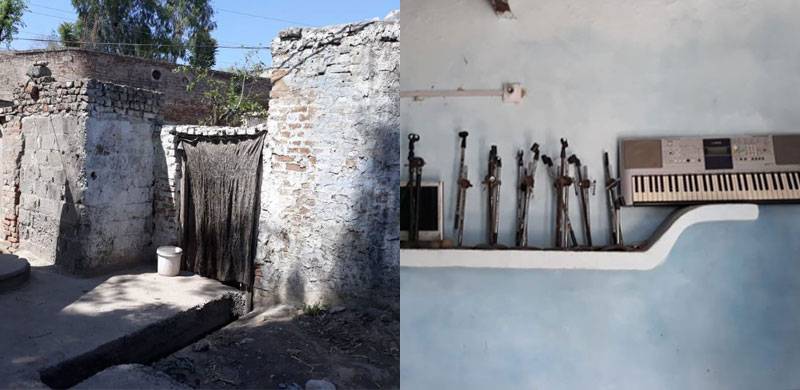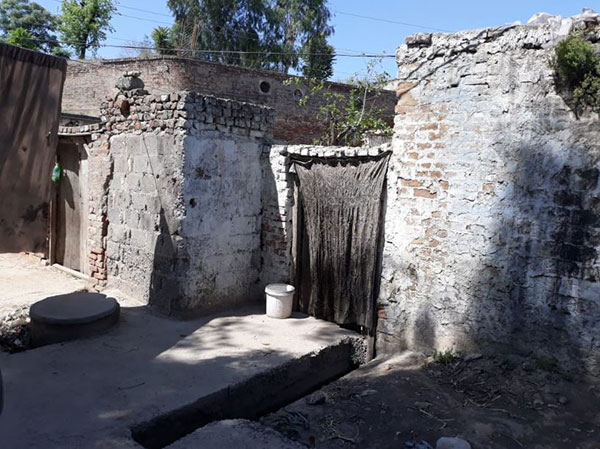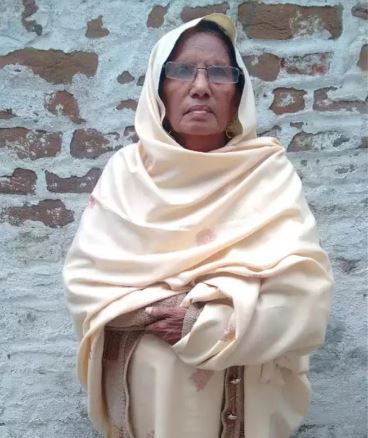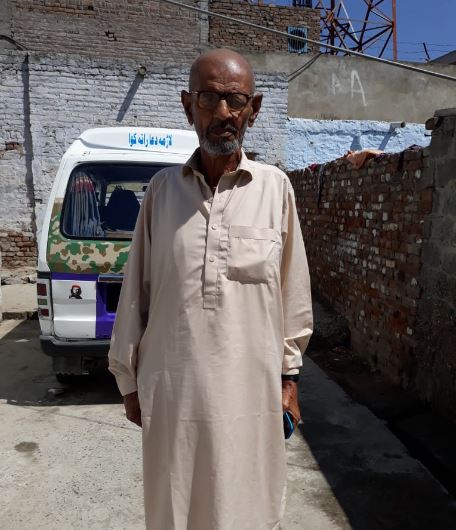
Mohalla Phulail at Par Hoti is one of the most important and historically rich streets of Mardan because this is where some of the legends of their time in Pakhtun music and performing arts were produced.
This area was once known as a centre of music and art. In the past decades, this street has produced many veterans of Pakhtun music, including the great singer of Pashtu Ghazal Khyal Muhammad, the Tamgha-e-Imtiaz holder Bacha Zarin Jan, Kishwar Sultan and many others.
But now this street has lost its popularity and its role as a hub of musical and cultural activities. It has been replaced by markets and shops. This splendid street has been completely disfigured, and the government never paid any attention.
Shams Rehman, a local resident living near Mohalla Phulail, says, “I am not an artist nor am I associated with this street. But I remember it as a centre for cultural and musical activities but I do not know how things changed, and this historical street looks like a ruin now of its splendid past”.

He added that no one was paying attention to this historical street and this was the reason behind it losing its famed splendour.
Muhtaj Hussain, a local artist, says “Two or three decades ago, it was a bustling street, producing top artists, and the attitude of the common people towards us was very positive. But now things have changed to a point that no one is ready even to talk to us”.
“All we want is dignity. We entertain people. It’s not a crime”, he said.
According to Muhammad Hussain, a man in his 80s and elder brother of legendary singer Bacha Zarin Jan, ‘in the past, the artists were very honest and sincere with their art but now it is disrespected and degraded by the people and this is the reason why Mohalla Phulail has become what it is today’.
He said, “I do not only blame the common citizens and their attitudes for the decline of this art, but also our artist community because they are not serious with their jobs anymore and that is why this art and the role of this street declined”.
“In the past the society was very mature and they loved music and art and the common people of the region were like a safeguard for us and this profession. But now we are facing harassment from the society. Our profession has become a stigma”.
A female singer Shano* hailing from the street, said, “I am a local singer and have learnt this art from this street, my elders like Qamro Jan and Bacha Zarin Jan were associated with this art and received much appreciation from the common people. They used to move freely. But things have changed now and I can’t even go out of my home in the daytime because of the people and their bad attitudes towards us”.

She added that she was proud to be a custodian of this art but the common people considered the female artists no more than prostitutes.
“My sister, Bacha Zarin Jan, served this nation for more than 60 years with her art and she went on to receive Tamgha-e-Imtiaz from the government of Pakistan. I am proud that this street produced her and she achieved what she deserved”, Muhammad Hussain said.

A Peshawar-based journalist Abdur Rauf Yousafzai says, “This Street was not only providing entertainment to the people but also played its fabulous role as a custodian of this part of the culture”.
He added that it was the responsibility of the state as well as the citizens to protect these very important people from aggression.
This area was once known as a centre of music and art. In the past decades, this street has produced many veterans of Pakhtun music, including the great singer of Pashtu Ghazal Khyal Muhammad, the Tamgha-e-Imtiaz holder Bacha Zarin Jan, Kishwar Sultan and many others.
But now this street has lost its popularity and its role as a hub of musical and cultural activities. It has been replaced by markets and shops. This splendid street has been completely disfigured, and the government never paid any attention.
Shams Rehman, a local resident living near Mohalla Phulail, says, “I am not an artist nor am I associated with this street. But I remember it as a centre for cultural and musical activities but I do not know how things changed, and this historical street looks like a ruin now of its splendid past”.

He added that no one was paying attention to this historical street and this was the reason behind it losing its famed splendour.
Muhtaj Hussain, a local artist, says “Two or three decades ago, it was a bustling street, producing top artists, and the attitude of the common people towards us was very positive. But now things have changed to a point that no one is ready even to talk to us”.
“All we want is dignity. We entertain people. It’s not a crime”, he said.
According to Muhammad Hussain, a man in his 80s and elder brother of legendary singer Bacha Zarin Jan, ‘in the past, the artists were very honest and sincere with their art but now it is disrespected and degraded by the people and this is the reason why Mohalla Phulail has become what it is today’.
He said, “I do not only blame the common citizens and their attitudes for the decline of this art, but also our artist community because they are not serious with their jobs anymore and that is why this art and the role of this street declined”.
“In the past the society was very mature and they loved music and art and the common people of the region were like a safeguard for us and this profession. But now we are facing harassment from the society. Our profession has become a stigma”.
A female singer Shano* hailing from the street, said, “I am a local singer and have learnt this art from this street, my elders like Qamro Jan and Bacha Zarin Jan were associated with this art and received much appreciation from the common people. They used to move freely. But things have changed now and I can’t even go out of my home in the daytime because of the people and their bad attitudes towards us”.

Qamro Jan famous singer hailing from this street
She added that she was proud to be a custodian of this art but the common people considered the female artists no more than prostitutes.
“My sister, Bacha Zarin Jan, served this nation for more than 60 years with her art and she went on to receive Tamgha-e-Imtiaz from the government of Pakistan. I am proud that this street produced her and she achieved what she deserved”, Muhammad Hussain said.

Muhammad Hussain, brother of Bacha Zarin Khan
A Peshawar-based journalist Abdur Rauf Yousafzai says, “This Street was not only providing entertainment to the people but also played its fabulous role as a custodian of this part of the culture”.
He added that it was the responsibility of the state as well as the citizens to protect these very important people from aggression.
